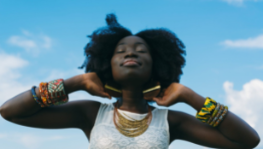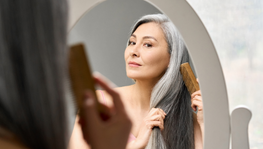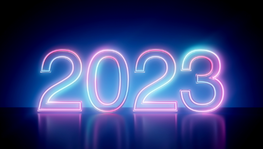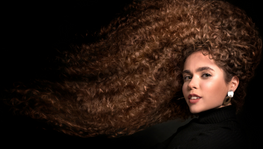When it’s time to get a few highlights in your hair, you have a choice between traditional foil highlights and balayage (also known as hair painting). There’s a difference between the two techniques and each has its advantages, depending on the look you’re going for. But you’re in luck, as many stylists and colorists are skilled in both techniques and can help you decide which will achieve your desired look. Still need help deciding between the two? We’re breaking down the details on foil highlights versus balayage, with tips from the experts.
MEET THE EXPERT
- Gina Rivera is the founder of Phenix Salon Suites. She is also the creator of Colours by Gina and the By Gina hair product line.
- Reece Walker is a bicoastal colorist, stylist, and hair extension expert for his celebrity clientele like Victoria Beckham, Miranda Kerr, and Caroline Vreeland.
What is Balayage?
:max_bytes(150000):strip_icc():format(webp)/75207255_178228190030488_7682643001891679388_n-56c3d74ced0a4d45ba3ea20d917a58dd.jpg)
Originating from the French word meaning “to sweep,” balayage is a hair color technique where a lightening solution is hand-painted on the surface of random portions of hair. According to Walker, balayage is a freehand technique, not a look. “Typically, balayage colors are shades that are slightly lighter than your base color and the color is applied to create a more natural look,” adds Rivera. “The end goal is to provide a lightened look while creating depth and dimension in a way that appears to be natural.
What Are Highlights?
:max_bytes(150000):strip_icc():format(webp)/cdn.cliqueinc.com__cache__posts__258419__brown-hair-with-blonde-highlights-258419-1527023674325-image.700x0c-bb0c88710148499ab97de63e56dc7423.jpg)
Highlights, on the other hand, are more traditional and generally done using foil. “Hair highlighting is changing the hair color, using a lightener or hair color to lift the level or brightness of the hair strands,” says Rivera, noting that there are four basic types of highlight application, which include foil highlights, hair painting, frosting, and chunking.
What Are Babylights?
Babylights are very subtle and lightly applied highlights that are meant to look natural much like a child’s hair, hence the name. Since they are done so delicately, babylights tend to look best on those with finer hair.
Highlights vs. Balayage: What’s the Difference?
It’s very likely that your colorist will recommend highlight foils if you want a big color shift. Foils tend to work best when taking dark hair four or more shades lighter. The same is true if you want hair that has a lot of contrast with both highlights and lowlights or prefer an even distribution of color.
“Highlights are often placed much closer to the scalp and applied in specific sections while the balayage process includes a graduated painting the color onto the hair in random sections,” says Rivera.
If you are looking to add non-uniform chunks or sweeps of color, balayage is a better option. The method offers your stylist more freedom to add color that fits and flatters your cut, face shape, and, of course, your personal style. So, if you have more of a carefree attitude, you can give your colorist the opportunity to stretch their artistic muscles with balayage.
Balayage is also great for face-framing highlights. Where foils often target the full shaft of the hair, including the roots, balayage is frequently used to highlight from mid-length to ends, leaving a more natural root.
Which Is Better For Your Hair?
While the method of color application will largely rely on the results that a person is attempting to achieve, there are some thoughts to take into consideration. “How dramatic you want the look to be, the hair texture, and the length of the hair are some things to consider,’ says Rivera. “Those with longer hair may opt more towards balayage as the length will allow for easier sweeping on of the color. While those with shorter hair may opt for a highlight as the process allows for the color to be applied much closer to the scalp.”
Balayage is also a gentle, subtle way to cover grays because the stylist can paint just the gray strands rather than having to color your entire head. Likewise, if you’re in a transition phase and want to grow out your roots without making it obvious, balayage can be a natural-looking and temporary solution. For instance, they may suggest giving you just as many highlights as they would with foils, or they may suggest a gentle sun-kissed look with just a few natural streaks here and there.
“Balayage is great for people wanting a soft grow out and warmer tones,” says Walker.
Some stylists, Walker included, even use a combination of balayage and foils. One technique known as “American tailoring” begins with foils after which balayage highlights are painted in between the new highlights to soften and blend the color. Another popular approach is “foilyage,” and it’s just the opposite: Starting with painted color and finishing up with foil accents.
Maintaining Balayage
If you prefer to avoid the maintenance of getting your hair colored every six to eight weeks, balayage may be a better match for your lifestyle. The technique is less obvious and allows you to go longer between salon visits—even just three to four times a year—and it grows out beautifully.
“Because balayage is freehand, it’s not for someone who likes to have their roots touched up every week,” says Walker. “I like to have enough regrowth to work with ideally four months-worth. Anything sooner than three months, in my opinion, causes too much breakage from the overlapping of color.”
To maintain balayage, Rivera recommends using a sulfate-free wet line of shampoo and conditioner. “I recommend Pure BioGen Complex ($16) because it’s packed with biotin, collagen, and B Vitamins, which are designed to improve hair and scalp health,” she says.
Prevent your balayage from looking brassy by using a purple or blue shampoo once or twice a week.
Maintaining Highlights
Foil highlights have an obvious demarcation, so new growth is also more noticeable. Again, Rivera recommends using a sulfate-free wet-line of shampoo and conditioner, and to reduce the heat slightly when washing to extend color. “Keep the color fresh by periodically doing a clarifying treatment,” she recommends.
For his blonde clients, Walker uses foil highlights as he “has more control and can lift the hair to that creamy very light blonde that girls want without overlapping.”
“To freshen up the blonde ends that have gotten a little dull over time, I like to balayage/tip-out the ends while my foils are processing,”
Consider the Look You’re Going For
All in all, each highlighting method creates a different look. For a natural, sun-swept look, balayage highlights are the perfect option. If you prefer uniform highlighted strands from root to ends throughout your hair, foils are your best bet. That being said, you do have the option to get both at the same time.
“Balayage is great for a low maintenance highlight, adding beautiful rich and warmer tones to the hair,” says Walker. “Foils are for the girls who love to have very little regrowth and like their hair nice and light.”
Go With More Than One Color
You’ve probably noticed that natural hair colors aren’t a single shade and that each strand is a different color. You can achieve similar diversity when getting either balayage or foils by asking your stylist to use more than one color for highlights that look even more natural.
You can also consider getting lowlights—a color that’s about two shades darker than your highlights. When lowlights are woven into the hair, they add dimension and depth for some fabulous-looking locks.
Refrain from washing your hair daily to maintain the color for longer, and wear a hat to protect from the sun fading the color.
The Final Takeaway
While some stylists use the two techniques together, determining if you are best suited for highlights or balayage is up to you. However, taking into account your hair color, length, texture, and lifestyle could help make your decision a bit easier before you hop in the chair.
Credit to: Julyne Derrick for BYRDIE




